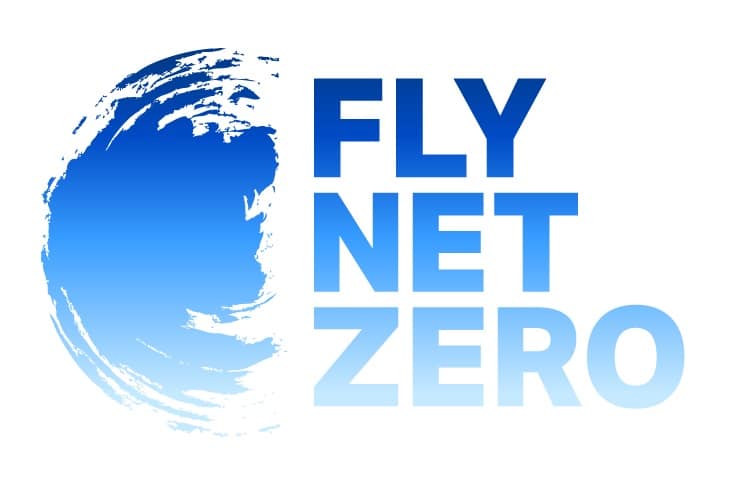IATA’s Net Zero strategy indicates that emissions that cannot be eliminated at source will be taken out via out-of-sector options
The International Air Transport Association (IATA) has issued new FlyNetZero update to shine a light on the global airline industry’s efforts on the journey to reaching Net Zero emissions by 2050.
The latest IPCC report highlighted that nascent carbon removal efforts will become crucial for the aviation sector to reach net-zero emissions. In its AR6 Synthesis Report, the UN body said that “sustainable biofuels, low-emissions hydrogen, and derivatives (including ammonia and synthetic fuels) can support mitigation of CO2 emissions” in the transport sector – a view shared by the airlines in their focus on sustainable aviation fuels.
Reinforcing the industry’s push for critical political support, the report says that “production process improvements and cost reductions” are important to encourage the wide adoption of sustainable fuels needed for aviation to help limit the projected rise in global temperatures. In addition, the report notes that even with a wide adoption of SAF, “some hard-to-abate residual GHG emissions remain and would need to be counterbalanced by deployment of carbon dioxide removal methods to achieve net-zero CO2 or GHG”. This makes it clear that carbon removal will be a critical necessity for the industry, as indicated in IATA’s Net Zero strategy where emissions that cannot be eliminated at source will be taken out through out-of-sector options such as carbon capture and storage and credible offsetting schemes.
Sustainable Aviation Fuels (SAF)
A busy month in the US, where:
• JetBlue and Shell Aviation have announced a new agreement to bring additional supplies of SAF to LAX. Under the agreement, Shell Aviation will commence delivery of SAF to LAX in the first half of 2023. JetBlue is expected to take delivery of 10m gallons of blended SAF at LAX over the next two years, with an option to purchase up to 5m more gallons in the third year, either at LAX or at other airports in JetBlue’s network.
• United aims to boost SAF production through the investment of $5 million in algae biofuel company Viridos, and announced a further $5 million investment in carbon-capture technology firm Svante, which is researching how to convert carbon dioxide removed from the atmosphere into SAF. The airline also named Oscar the Grouch as its “chief trash officer,” for an education campaign to help travelers better understand how SAF works, especially focusing on how SAF can be made from onboard waste.
• Alaska Airlines announced an agreement also with Shell Aviation to expand the SAF market beyond a standard fuel supply agreement. The agreement includes commitments to deepen understanding of SAF technology, infrastructure, carbon accounting systems, and public policy support needed to bring SAF to more markets.
• Hawaiian Airlines announced an agreement with biofuel company Gevo, Inc. to purchase 50 million gallons of SAF over five years. Gevo expects to supply the SAF from a facility to be constructed in the Midwestern United States and begin deliveries to Hawaiian’s gateway cities in California starting in 2029.
• Delta Air Lines announced their new sustainability strategy and an agreement with Gevo to supply 75 million gallons of SAF per year for seven years. The agreement replaces the existing agreement signed with Delta in 2019 to purchase 10 million gallons per year.
In Northern Europe, Air Greenland announced that flights servicing the route between Søndre Strømfjord/Kangerlussuaq and Copenhagen Airport in Denmark will now use SAF, through a new SAF supply agreement between with DCC & Shell Aviation Denmark. In Europe, Icelandair and IdunnH2 have signed an MoU for up to 45,000 tons of SAF from 2028 onwards. Finnair purchased 750 tons of SAF from Neste to reduce the carbon emissions from flights departing from Helsinki Airport. The fuel volume now purchased is Finnair’s single largest batch of SAF purchased to date to be delivered to Helsinki Airport in early 2023. German aerospace research center DLR is to set up a the “world’s largest” power-to-liquid (PtL) research facility for e-fuels for aviation, after receiving a Euro 12.7m government grant for the project.
In France, Airbus flew an A321neo aircraft with both of its engines powered by 100% unblended SAF from its headquarters in Toulouse. In Ireland, a study by Aircraft Leasing Ireland and KPMG stated that Ireland is well positioned to produce SAF, adding the Irish government could assist with a framework for SAF production, partnering with universities to fund SAF R&D, and supporting the creation of a sustainability accreditation register. And in Spain, CEPSA announced it will build a second-generation biofuel, including SAF, in Huelva, which will involve an investment of up to $1.07 billion.
Finally, across to Asia. In Singapore, the Civil Aviation Authority of Singapore (CAAS) will set up a $50 million Aviation Sustainability Program to support Singapore’s drive to develop a sustainable air hub, The Aviation Sustainability Program will provide selected applicants with funding towards delivering measures that help to reduce aviation’s carbon emissions, build sustainable operational capabilities, or unite industry partners to help create a sustainable aviation ecosystem.
Japanese oil and metals company Eneos Holdings agreed to study production of up to 500m liters of SAF and renewable diesel per year with Australia’s Ampol, in the northeastern Australian state of Queensland. Also in Australia, the Quantas Group and Airbus have announced a joint investment of A$2 million (S$1.8 million) in a biofuel refinery being set up in Australia’s Queensland state that would convert agricultural by-products into SAF. The funds will be used for a detailed feasibility study and early-stage development of the proposed facility jointly developed by Jet Zero Australia and LanzaJet.
Hydrogen & electricity
In the US, Universal Hydrogen announced having successfully completed the first flight of a hydrogen regional airliner. The company also partnered with Japanese companies Sojitz and Mitsubishi HC Capital to study and develop a green hydrogen supply and logistics solution for Japanese airlines. Honeywell Aerospace has signed a multi-year contract with Worcester Polytechnic Institute to develop hydrogen storage and fuel cell technologies for future use in the air transport sector. Fortum and Zero Avia signed a MoU to explore developing hydrogen production and refueling infrastructure at airports in Europe.
Swedish zero-emission aircraft developer Heart Aerospace will collaborate with the government of the Åland Islands – an autonomous region of Finland in the Baltic Sea – to explore the use of the hybrid-electric ES-30 to decarbonize air transport links to the islands. In Canada, Swiss company H55 announced building a manufacturing facility in Saint-Hubert, Quebec, to supply new and existing Canadian customers — including Pratt & Whitney Canada, CAE, and Harbour Air of Vancouver — with battery technology in support of green aviation initiatives.
Airports
Airports Council International (ACI) released the annual airport climate action results for Airport Carbon Accreditation. The latest carbon reduction and compensation results achieved are record-breaking. In the period covered, accredited airports succeeded in collectively reducing the CO2 emissions under their control by 549,643 tons, a reduction of -8.1%. This is the largest reduction ever achieved through the program.





